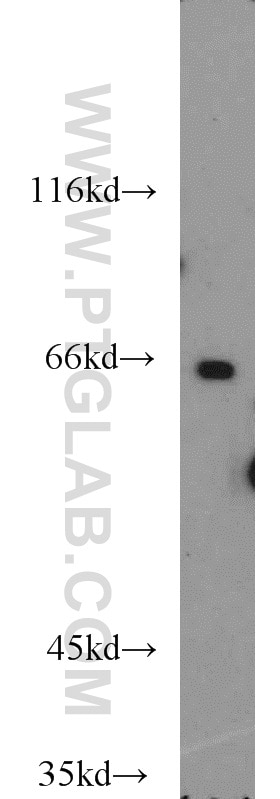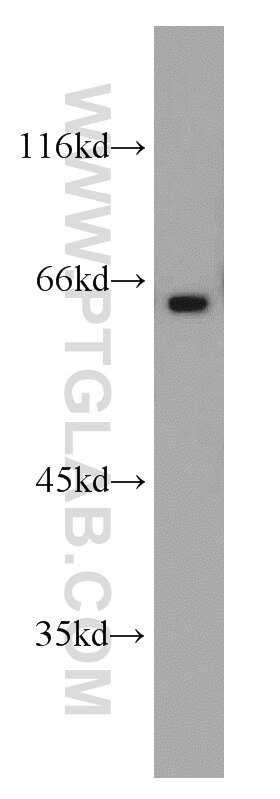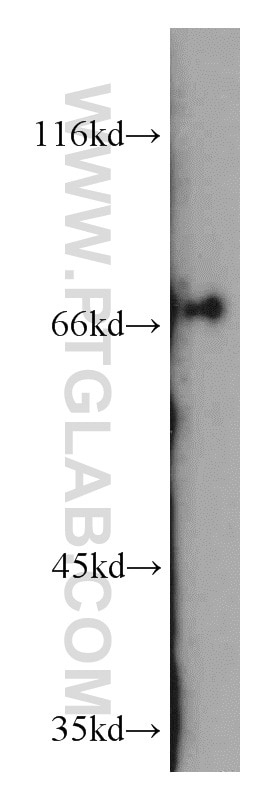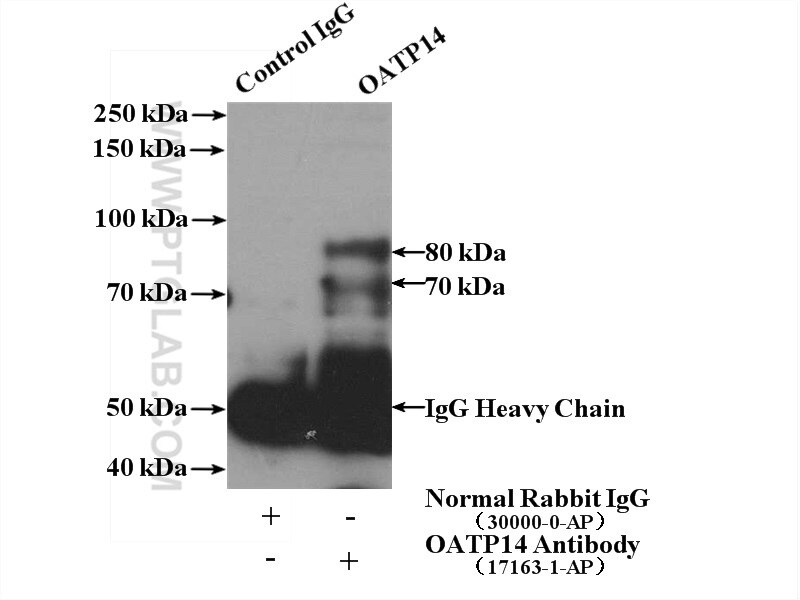OATP14 Polyclonal antibody
OATP14 Polyclonal Antibody for WB, IP, ELISA
Host / Isotype
Rabbit / IgG
Reactivity
human, mouse, rat
Applications
WB, IP, ELISA
Conjugate
Unconjugated
Cat no : 17163-1-AP
Synonyms
Validation Data Gallery
Tested Applications
| Positive WB detected in | PC-3 cells, mouse brain tissue, mouse kidney tissue |
| Positive IP detected in | mouse brain tissue |
Recommended dilution
| Application | Dilution |
|---|---|
| Western Blot (WB) | WB : 1:500-1:1000 |
| Immunoprecipitation (IP) | IP : 0.5-4.0 ug for 1.0-3.0 mg of total protein lysate |
| It is recommended that this reagent should be titrated in each testing system to obtain optimal results. | |
| Sample-dependent, Check data in validation data gallery. | |
Published Applications
| WB | See 2 publications below |
Product Information
17163-1-AP targets OATP14 in WB, IP, ELISA applications and shows reactivity with human, mouse, rat samples.
| Tested Reactivity | human, mouse, rat |
| Cited Reactivity | human, mouse |
| Host / Isotype | Rabbit / IgG |
| Class | Polyclonal |
| Type | Antibody |
| Immunogen | OATP14 fusion protein Ag10573 |
| Full Name | solute carrier organic anion transporter family, member 1C1 |
| Calculated Molecular Weight | 712 aa, 79 kDa |
| Observed Molecular Weight | 62-70 kDa |
| GenBank Accession Number | BC022461 |
| Gene Symbol | SLCO1C1 |
| Gene ID (NCBI) | 53919 |
| RRID | AB_2189706 |
| Conjugate | Unconjugated |
| Form | Liquid |
| Purification Method | Antigen affinity purification |
| Storage Buffer | PBS with 0.02% sodium azide and 50% glycerol pH 7.3. |
| Storage Conditions | Store at -20°C. Stable for one year after shipment. Aliquoting is unnecessary for -20oC storage. 20ul sizes contain 0.1% BSA. |
Protocols
| Product Specific Protocols | |
|---|---|
| WB protocol for OATP14 antibody 17163-1-AP | Download protocol |
| IP protocol for OATP14 antibody 17163-1-AP | Download protocol |
| Standard Protocols | |
|---|---|
| Click here to view our Standard Protocols |
Publications
| Species | Application | Title |
|---|---|---|
Toxicol Sci Hepatic, metabolic and toxicity evaluation of repeated oral administration of SnS2 nanoflowers in mice. | ||
Toxicology BDE209-promoted Dio2 degradation in H4 glioma cells through the autophagy pathway, resulting in hypothyroidism and leading to neurotoxicity |





